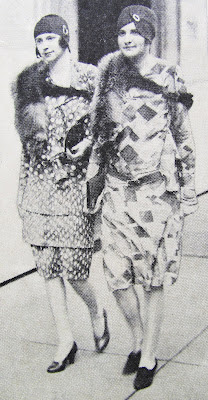
This is a second post on easy to sew dress patterns. The first post looked at loose fitting shift dresses. After mastering the super easy shift style dress, it's time to sew a classic sheath dress.
This very popular post has been recently updated in: 7 Best Sheath Patterns with Vintage Style: Easy to Sew, so you may want to go there to find more recent patterns to choose from and some updated sewing tips HERE.
What makes the sheath dresses shown here easy to sew?
1) no waistline seam, and they look great if belted
2) dress skims the body, but isn't super tight or super loose (like a shift dress)
3) no set in sleeve (but I found a great raglan sleeve instead)
4) most are still 2 main pattern pieces: front and back
The first dress shown above is Butterick 4386. This dress has a classic darted torso. It can be sewn into so many great styles, from a "little black dress" to a tropical summer dress, the fit will be slender. There is a back zip and hem vent.

Curvey fit? This is the best pattern style for getting a good fit. Butterick 5638 has well placed 'princess seam lines'. Those long seam lines provide an opportunity to fit the bustline, torso and hips. There are six seam lines to work with, and each one can be let in or out only a little bit to affect the fit.

Want Sleeves? Butterick 5277 is a short sleeved silhouette that is easy to sew, since raglan sleeves are used, rather than the more difficult 'set in' sleeve style. Long torso darts fit the body and there is a zipper down the back.

For a looser fitting dress, here are two styles. New Look: View A is available in two patterns, 6049 and 6095 (they seem to be identical). This dress has back darts to create a smooth fit. Side seams create the torso fit, if you don't want a close fit across the midriff. There is an optional back zipper.
New Look 6021, View B shows French darts. These are long tapered darts that fit the midriff nicely. French darts were popular during the 60's. This type of dart is also a good look if the fabric pattern is large and would be distorted by front darts or princess seam lines.
Fabric selection: In addition to the simple cottons mentioned for shift dresses (quilting cottons, cotton gingham, woven cotton plaids and stripes), we can add stretch wovens to our list. Keep your stretch manageable, don't select anything too 'wiggley' and out of control. When using a stretch, lay out the fabric so the stretch goes around the body (not 'up and down' or it will bag at the rear!).
Obviously, the classic sheath dress is a vintage look that an experienced sewist can whip up in almost any fabric, from wool flannel to brocade.
Fittings are more essential with the semi-fitted sheath style. Plan to do a trial fit before sewing your final seam lines. I suggest when cutting to making 1" wide seam allowances down the side and back seams lines. This will give room to alter for fit.
Slender fit: Look for slender darts. Don't take up extra width in the darts. Do your fitting from the side seams.
Curvey fit: These darts are wider and may be shaped towards the dart point. This fit may also need side and back seam line adjustments. Traditionally, the back seam was cut 'on grain' or very straight, but now it is common to use that seam line to fit the rear nicely.
Princess seam lines make curvey fittings much easier. Just distribute any alterations through the several seams, and you will notice that the fitting process is actually easy to achieve.
Zipper: Take note to make your zipper seam allowance (the back seamline) 1" wide. You will be soooo happy you have the extra fabric when you sew in your zipper. It sure helps to have the extra width.
Math: get a 1" wide seam allowance by adding 3/8" to your cutting line. Yes, you will have to draft that line onto your pattern tissue first, before you cut.
When sewing a zipper, be sure to clean finish the fabric edges first, so the cut edge won't unravel and get into your zipper. I use an overlock seam or I zig-zag over the fabric edge to bind that over and prevent it from unraveling.
Once you get the sewing of this dress style perfected, it could become your favorite: fast, great fit, and easy to sew.
Here are a few blog posts that also talk about sewing dresses:
7 Best Sheath Dress Patterns with Vintage Style: Easy to Sew
9 Best Dress Patterns for Beginners: Easy to Sew
6 Easy to Sew Shift Dresses
If you liked this blog post, follow me on
Bloglovin to keep up with my most current articles,
You can also find me on:
Facebook - Pintucks
Pinterest - Pintuckstyle
Instagram - Pintuckstyle
Twitter - Pintucks
























































